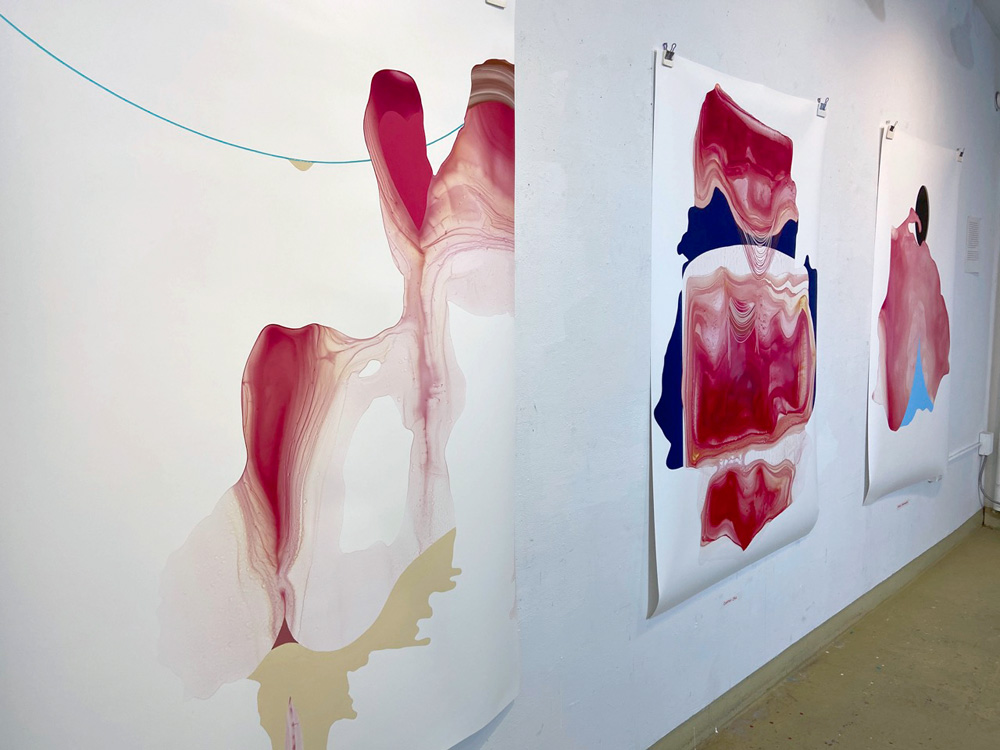Last year I began working on a new project informed by medieval carnivals and literary interpretations of François Rabelais. After I finished a dozen or so successful small pieces, I realized that the work needed to grow bigger, more theatrical, body-sized. I needed to scale up. This is where the challenges began.
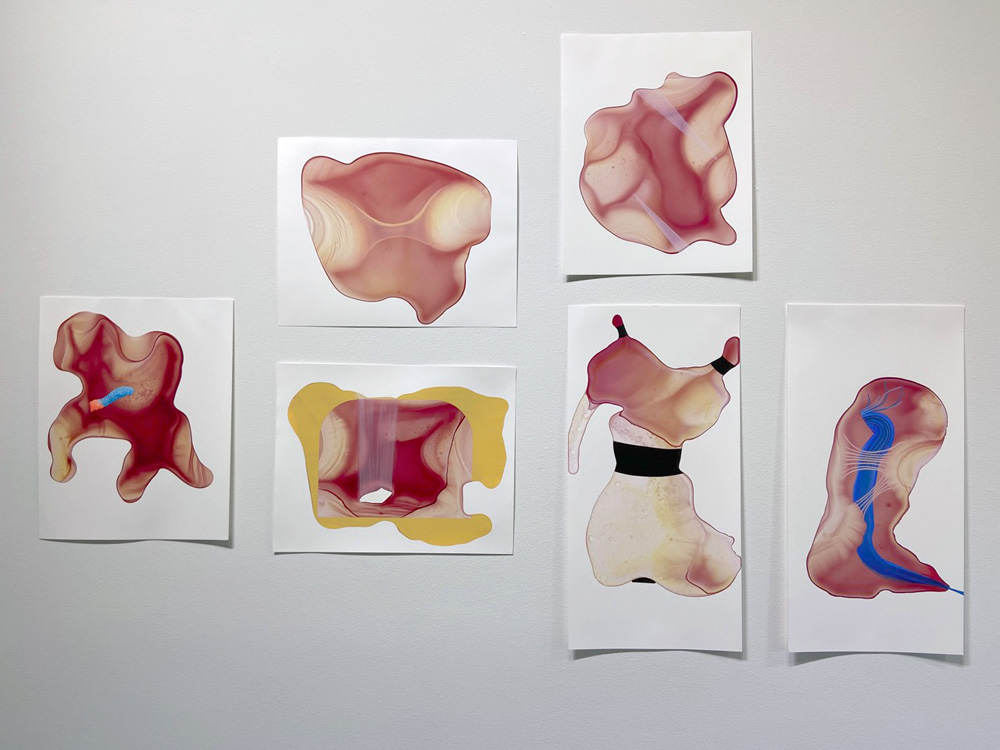
I learned about scaling up when I worked in a food science laboratory. We ran small-scale experiments on a lab bench in quantities on the order of a few hundred grams (at most a pound or two), and then tested the outcome in what’s called a “pilot” plant (hundreds of pounds) to see if the experiment still worked on a larger scale before sending our final results to the actual plant (thousands of pounds) for manufacture.
In art, scale is about relationships: to referents, bodies, and elements within the piece. According to some branches of phenomenology, humans intuitively look for ways in which our bodies relate to objects and images; it’s how we move through the world. A tiny object that could fit in my hand is going to feel intimate, maybe even precious, like a photo I keep in my wallet or a small piece of jewelry. Small things also feel more private, as though they are meant to be experienced by one or at most two people at a time. When artwork grows larger, body-sized, it becomes a body equivalent, an analogue. Six feet or larger, and it overwhelms, becoming monumental, intimidating—a confrontation. Large work also feels like something meant to be viewed by a crowd. In truth, many other variables besides scale can affect these relationships; the outcome varies depending on what else is at play.
Although I was happy with the notebook-sized pieces, I realized that the new work needed to be around five feet tall. I didn’t want to go much bigger than that; the idea of body-sized grotesques sounded exciting.
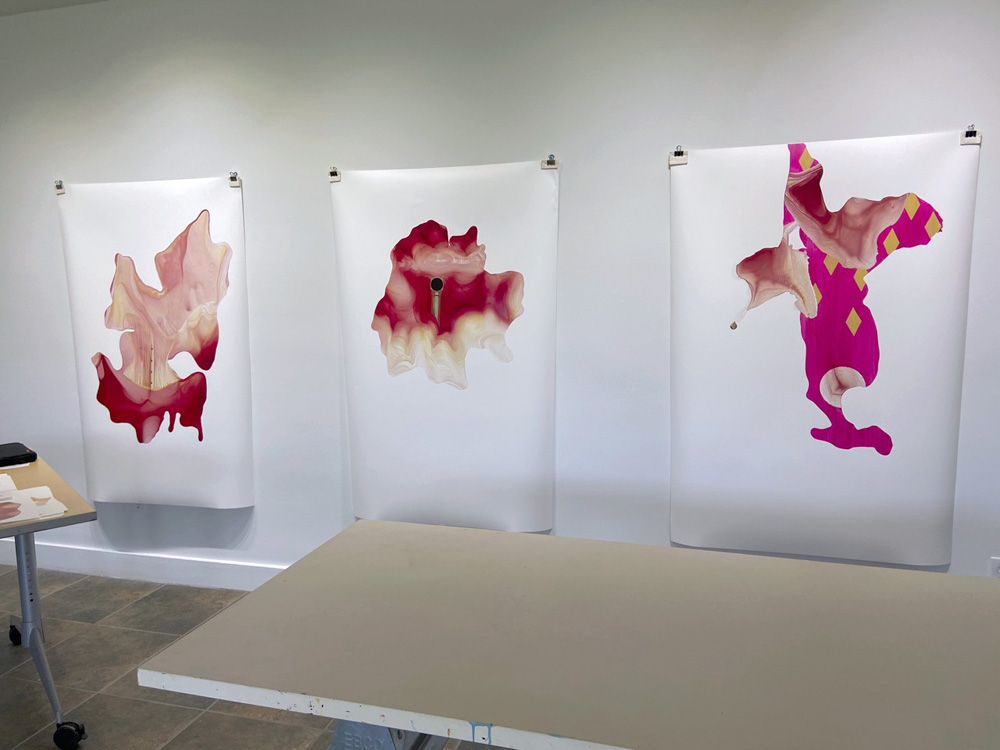
I created the first few larger pieces during a residency late last summer and immediately discovered that they simply didn’t work. The texture of the ink, for example, which was so mesmerizing on a small scale, all but disappeared in the larger work. This was partly due to the distance required to see the whole piece, and partly due to the relationship of texture vs. sheet dimensions. Trompe-l’oeil didn’t function the same way either; in small pieces, the occasional gummy worm or cigarette worked well. However, the illusion was lost on a larger scale; the objects were too small to assert any presence—yet when drawn larger they just didn’t make sense.
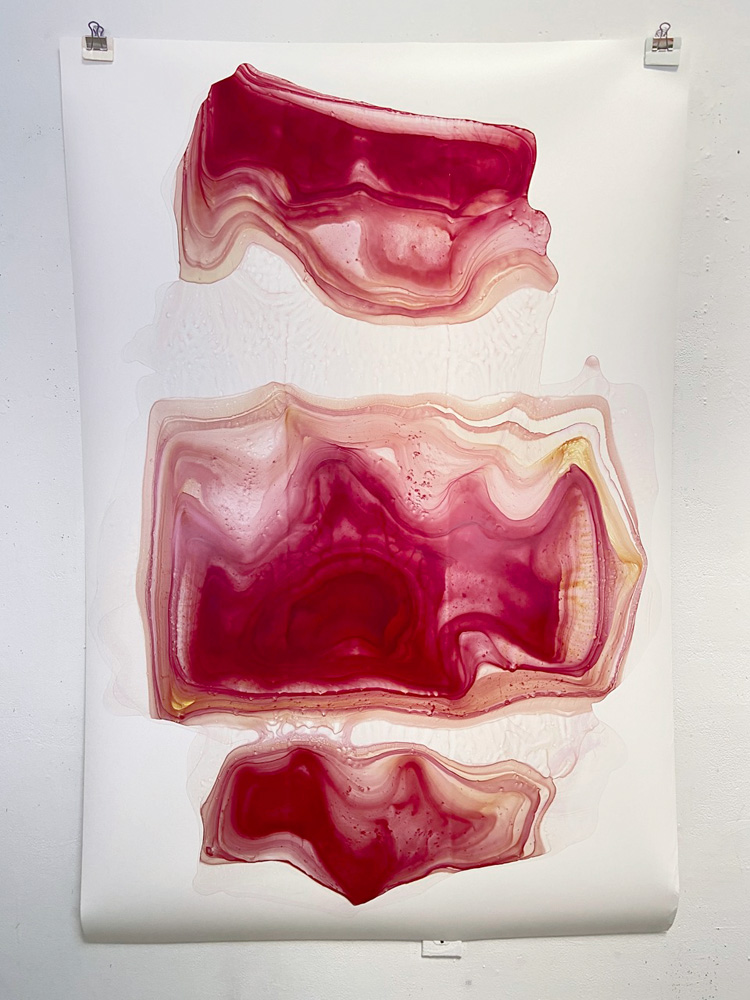
Furthermore, the ink pooled in multiple areas of the large sheets, causing the initial forms to look more fragmented… I also had to find the best ratio of ink to water which required some experimentation. Too concentrated, and the ink flaked off when dry; too diluted, and it became pale and barely noticeable. The time it took for the ink to dry on larger sheets was so long that the pigments and other components settled in ways that created additional challenges.
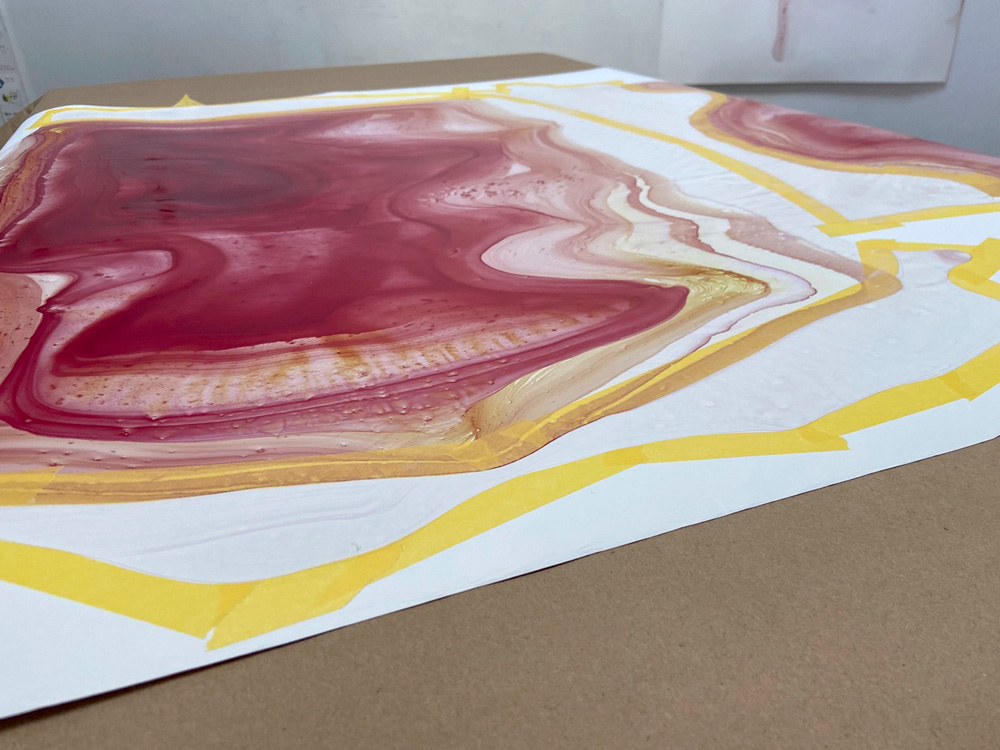
I solved a few of these problems over the next few months and then created a few successful pieces during a focused period at another residency in March 2023. After reviewing and studying the differences between past successes and flops, I created a protocol of sorts, a set of steps that helped me work through the larger scale. In the end, I realized that the most compelling pieces had something rather subtle in common—they featured the ink as the main character rather than the arena or ground upon which other things happened. Successful additions served only as reinforcement for the ink. This realization created a whole new set of questions. The new challenge was to find forms that would emphasize the ink’s personality without overpowering it or sending it into the background. Since the possibilities were endless and I wanted to stick with the topic of carnival and similar festivals, I made a list of motifs: masks, costumes, candy, toys, musical instruments, foods, etc. This worked well for a while until I ran into the next problem: negotiating chance. I will write about this in the next journal entry.
